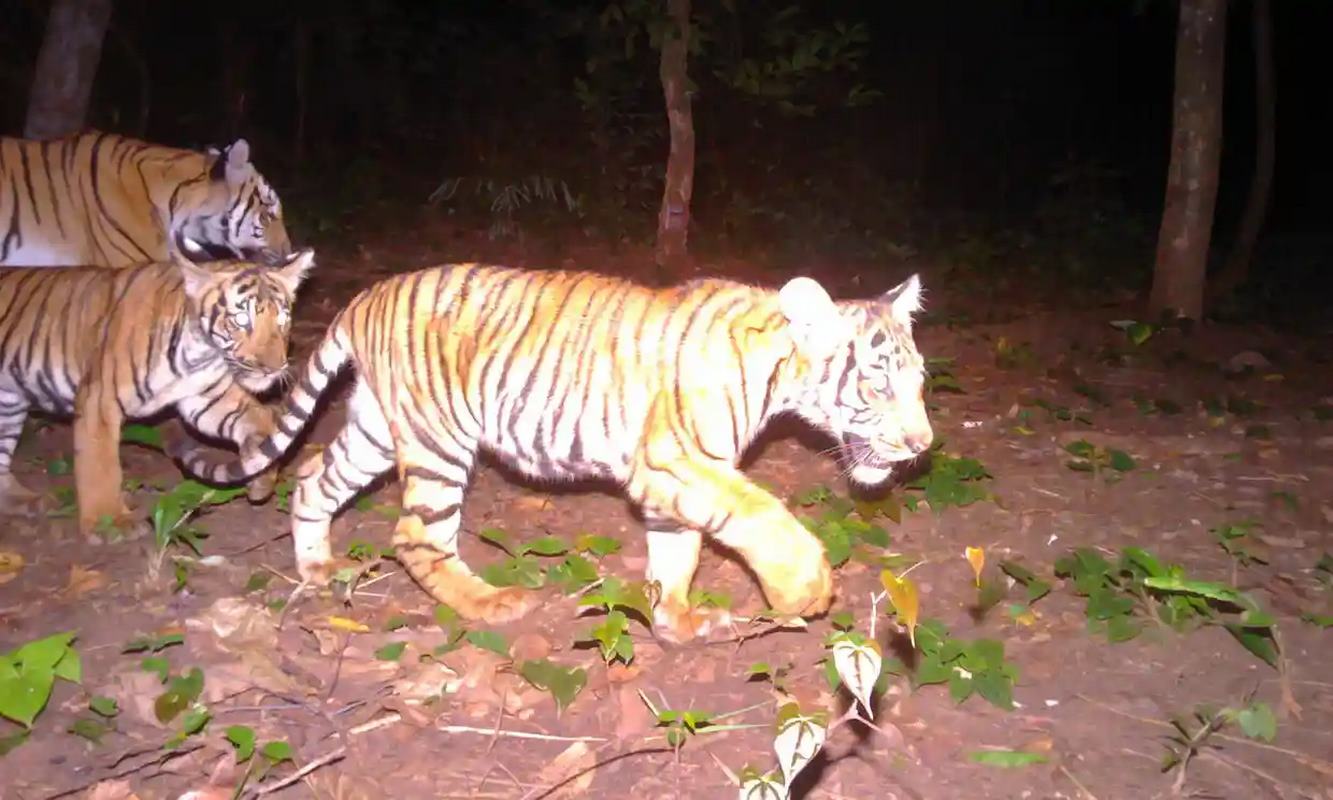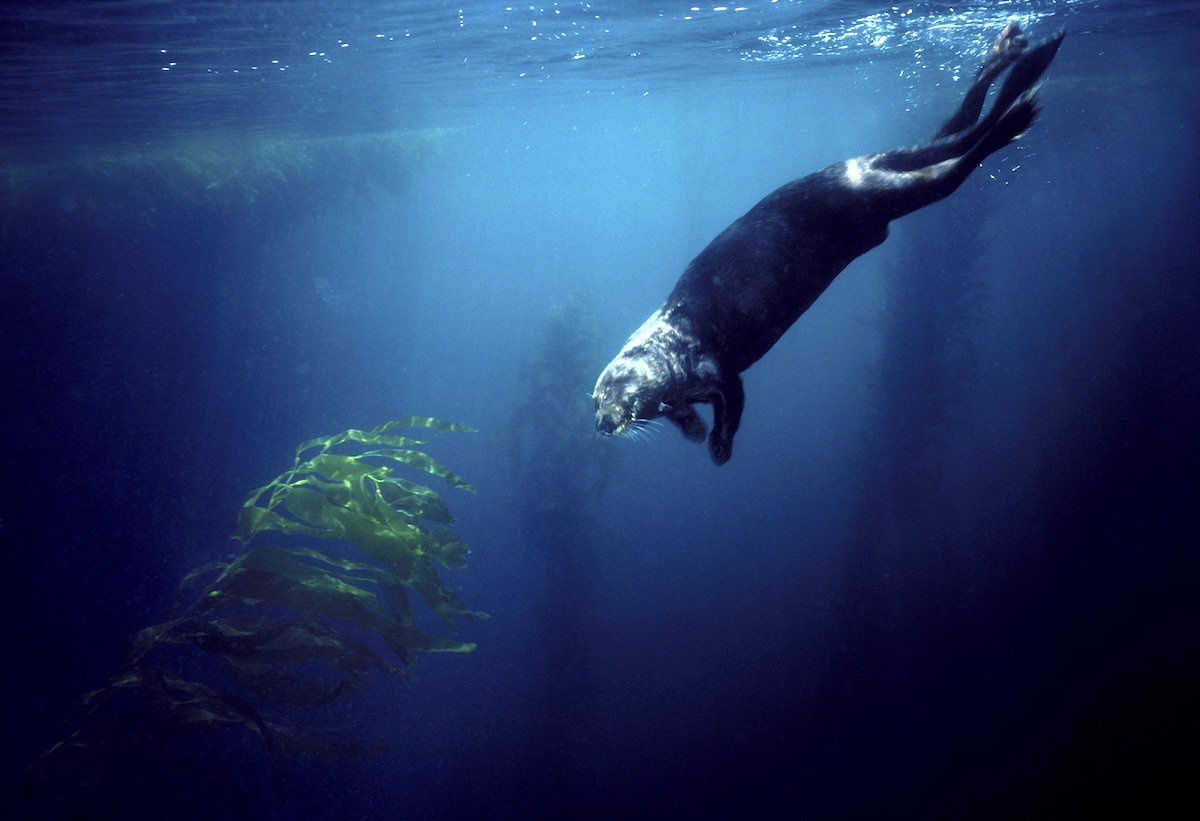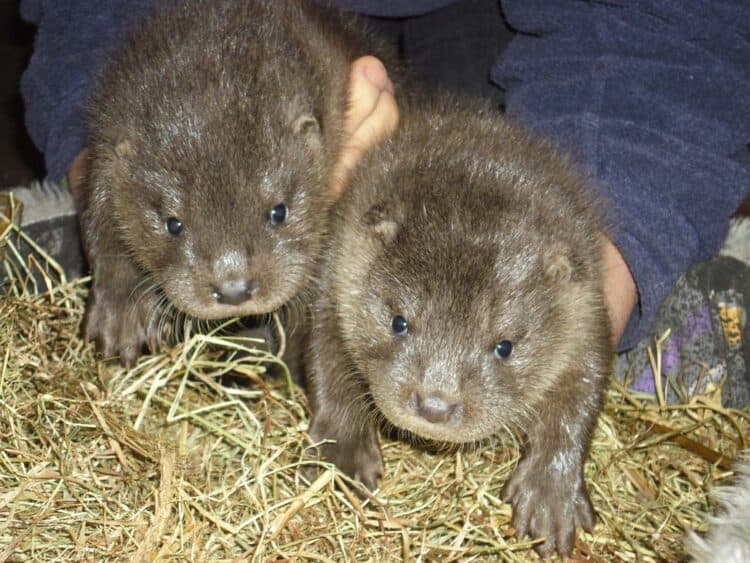Otters, with their gleeful yikkering, playful presence and sinuous underwater grace, are emblematic of the joy and resilience of nature in many parts of the world. But they aren’t among the first animals that come to mind when we think of Thailand. Yet several species of the sleek aquatic mammal frolic in Thailand’s watery thoroughfares and along its tropical coastline, although precious little is known about them.
“Most wildlife studies in Thailand are about big carnivores, like tigers and leopards. There’s a vast amount of data from camera-trap surveys for these species, but we haven’t looked at smaller species [like otters] so much,” Naruemon Tantipisanuh, a conservation researcher at King Mongkut’s University of Technology Thonburi in Thailand, told Mongabay.
To plug this knowledge gap, Naruemon and her colleagues recently completed a five-year camera-trapping study in southern Thailand’s coastal wetlands to document the distribution of two species of otter along the fast-developing seaboard.
Publishing their results in Global Ecology and Conservation, the team report that although both smooth-coated otters (Lutrogale perspicillata) and Asian small-clawed otters (Aonyx cinereus) are able to survive in mosaics of human-modified land, comprising plantations, farmland, aquaculture ponds and urban areas, they still rely heavily on patches of remaining natural habitat, such as mangrove forest.
“Otters try to adapt themselves, but if possible, they would still prefer their natural habitat,” said Naruemon, lead author of the new study. “The problem is that land-use change can occur at any time, so perhaps landowners will want to develop plantations into houses or something that otters cannot use.”

In addition to mapping the distribution of otters along southern Thailand’s Andaman Sea coast and its more-developed Gulf of Thailand shoreline, the study presents insights into the threats the otters face, and maps where conservation action could safeguard their survival along the coastline, which mostly lies outside the national network of protected areas.
The team found that both species of otter are most at risk from vehicle collisions, conflict with fish and shrimp farmers that can result in their persecution, and agricultural runoff polluting rivers, endangering not just the otter populations but also the prey they feed on.
Additionally, otters are increasingly captured from the wild to fuel the illegal pet trade, and they can become entangled in snares set by local hunters to catch an easy meal. “We saw some otters with a snare on their paws [or] on their back leg or around their middle,” Naruemon said. “Sometimes it would be clear that they couldn’t walk properly.”
The authors say their findings emphasize the importance of protecting natural habitats, such as mangroves, particularly along the Andaman Sea coast, and the “urgency” of implementing management to reduce threats.

Adaptability might be short-lived
As top predators, otters play a crucial role in maintaining the health of mangroves and other ecosystems by exerting control on prey and pest populations. Many species of otter are sensitive to environmental degradation, such as pollution and habitat loss, so they also serve as important indicators of overall ecosystem health.
Thailand is home to four of the world’s 13 species of otter. In addition to the two species surveyed in the study, both of which are listed as vulnerable on the IUCN Red List, the wide-ranging Eurasian otter (Lutra lutra) and the more covert hairy-nosed otter (Lutra sumatrana) are also found in the country. All four species face similar threats, but this is one of the first attempts to quantify them in Thailand, Naruemon said.
As in other parts of Southeast Asia, Thailand’s mangroves were intensively cleared and degraded since the 1990s to make way for crops and aquaculture, vastly reducing otter habitat. Between 2000 and 2012, Southeast Asia lost 0.18% of its vital carbon-sequestering coastal forests each year to oil palm plantations, rice fields and shrimp ponds.
While networks of drainage channels connected to natural watercourses can serve as rudimentary foraging grounds for resourceful otters within these production landscapes, their long-term value is never guaranteed as market fluctuations can spur rapid conversion to new, even less accommodating, land uses.
In this fluctuating and at times hostile environment, pockets of natural habitat serve as vital respite from the chaos of human activity, Aarati Basnet, an otter researcher and doctoral candidate at Kent State University in the U.S., who was not involved in the study, told Mongabay in an email.
“Adaptability [of otters] in disrupted environments might be a short term response, and prolonged exposure to these pressures could result in population declines, reduced genetic diversity, and heightened susceptibility to threats such as habitat destruction and pollution. Thus, managing the existing otter populations becomes imperative by safeguarding their natural habitats,” said Basnet, who also serves on the IUCN’s Otter Specialist Group.

Targeted conservation action
To investigate how southern Thailand’s otters are faring, the researchers surveyed a total area of 7,150 square kilometers (2,760 square miles), comprising mangroves, coastal peat swamp, agriculture and aquaculture, and human settlements and transport networks between 2016 and 2020. They deployed camera traps at 1,137 locations: 934 on the Andaman Sea coast and 203 along the Gulf of Thailand, placing them near otter latrines where possible to increase the likelihood of detection.
They also evaluated the otter prey supply at each location on the Andaman coast by sampling nearby watercourses for fish and crabs and interviewing local fishermen about their catches.
The team found that the larger-bodied smooth-coated otter dominated along the Andaman Sea on the east coast, where more natural habitat remains and where there’s typically less development pressure compared to the Gulf of Thailand. In contrast, small-clawed otters were found to be more prevalent in the gulf, along the west coast.
Basnet said a reason for the discrepancies between the east and west coast findings could indicate competition between the species. “The smooth-coated otter, being larger and inclined towards larger prey, holds dominance over the small-clawed otter,” she said. “Their occupation of more extensive natural habitats also hints at potential differences in their preferred prey species. Smooth-coated otters tend to favor larger fish as their primary prey, while small-clawed otters lean towards crustaceans, fostering their coexistence.”
According to the study, the smaller otters were strongly associated with the presence of aquaculture ponds. The researchers suggest this could indicate they’re avoiding competition for prey by raiding fish and shrimp aquaculture ponds — a highly risky behavior that can result in retaliation from disgruntled operators who view otters as a threat to their livelihoods.
Addressing these sorts of conflicts might become critical for the long-term survival of otters as climate change continues to diminish the quality of their habitat and natural prey populations. To this end, the team combined their camera-trap data with computer-modeling approaches to identify priority areas where they recommend management to reduce threats through targeted conservation action.

The authors suggest measures such as improving water quality, reducing collisions on roads by imposing speed limits in otter-rich areas, and introducing locally managed land-use zoning to preserve the integrity of existing otter habitats. Naruemon also said it will be crucial for government departments to work alongside communities to facilitate peaceful coexistence with otters.
The team also produced a “conservation importance” map that sets out areas of optimal otter habitat that coincide with low levels of threat. These optimal otter zones are concentrated along the less-disturbed Andaman Sea coast, particularly in the provinces of Krabi and Trang. Notably, fewer than 20% of these areas are currently afforded any form of protection, the study says, highlighting the need for focused conservation attention and monitoring.
Basnet, who has studied smooth-coasted otters in Nepal, said it would be great to replicate the Thailand study in more countries to identify conservation needs and management actions for otters. She also noted that the use of camera traps could also shed light on how otters are interacting with other wildlife within their environment.
Having found out where otters like to live in southern Thailand, Naruemon and her colleagues are now keen to find out how many there are by conducting population density studies. They’re also collecting fecal samples from wild otters to make genetic comparisons with otters confiscated as pets in Thailand and other countries like Japan and Indonesia to locate hotspots of hunting and trafficking.
“The main goal is to create a zoning management plan for otters in southern Thailand,” Naruemon said. “This study is the first step … then we have to answer other questions to fill the gap in knowledge about Thailand’s otters.”
Citations:
Tantipisanuh, N., Chutipong, W., Kamjing, A., Dachyosdee, U., & Ngoprasert, D. (2023). Assessing effects of landscape modifications and identifying priority areas for two Asian otters in coastal wetlands. Global Ecology and Conservation, 48, e02760. doi:10.1016/j.gecco.2023.e02760
Basnet, A., Ghimire, P., Timilsina, Y. P., & Bist, B. S. (2020). Otter research in Asia: Trends, biases and future directions. Global Ecology and Conservation, 24, e01391. doi:10.1016/j.gecco.2020.e01391
Richards, D. R., & Friess, D. A. (2015). Rates and drivers of mangrove deforestation in Southeast Asia, 2000-2012. Proceedings of the National Academy of Sciences, 113(2), 344-349. doi:10.1073/pnas.1510272113
This article by Carolyn Cowan was first published by Mongabay.com on 8 January 2024. Lead Image: An albino smooth-coated otter, with pink eyes, nose and feet, photographed by camera trap in southern Thailand. Image courtesy of CEG-KMUTT.
What you can do
Help to save wildlife by donating as little as $1 – It only takes a minute.







Leave a Reply